Best Electronic Drum Pads - Digital Percussion & Control
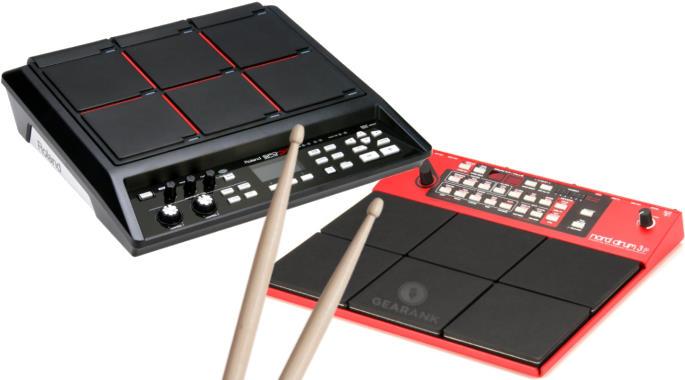
Author & Contributors
Alden Acosta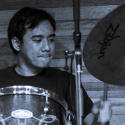
I'm a drummer and former lead guitarist of the band Callalily, a platinum selling multi-awarded band from the Philippines. I also studied music for 6 years majoring in percussion and jazz studies with a minor in classical piano.
Best Electronic Drum Pads
Alesis Strike MultiPad
Cons
- Slightly larger than the SPD-SX
- Loading times feel slow compared to SPD-SX
- Lacks the capability to adjust sample speed on the fly
- Sound stops playing when you switch kits
Pros
- 32 GB storage, larger than most competitors
- Large and well-organized included sound library
- Lots of connectivity options including 2 headphone jacks, 2 footswitch ports, a hi-hat port and support for up to 5 additional pads (with the use of Y-cable splitters)
- Innovative and modern fully-customizable colored LEDs
Kicking off this guide strong is the Strike Multipad from Alesis.
What started out as the new kid on the block has now proven itself to be one of the most popular, flexible and feature-rich multipads on the market today.
Boasting a large 32GB storage for samples, a vibrant 4.3 inch colored screen that's double-reinforced to protect it from accidental stick shots and an intuitive interface, the Strike Multipad is definitely worthy of your attention.
This is Alesis' current best attempt to dethrone reigning multipad king the Roland SPD-SX.
It attempts to do this by jam-packing this device with more features at a similar price point such as an on-board looper, an extra headphone output and even a hi-hat controller port.
Another notable feature the Strike has is the informative animated LED lights below each pad that can be customized to display different kinds of visual feedback such as (but not limited to) sample BPM, loop progress and even have different modes before, during and after you activate the pad.
If you want a modern flagship multipad that's filled to the brim with features, the Alesis Strike would fit the bill quite perfectly.
Specifications
- Built-in pads: 9 (with customizable, animated RGB lights)
- External Control Inputs:(1) 1/4" TS Single zone trigger input, (2) 1/4" TRS Dual zone trigger input, (1) 1/4" TRS HH pedal input, (2) 1/4" TRS footswitch input
- Record Inputs: (2) 1/4" TS input
- Audio Outputs: (2) 1/4" TS (main out), (2) 1/4" TS (aux out), (1) 1/4" headphone out, (1) 1/8" headphone out
- MIDI I/O:In, Out/Thru, USB
- Internal Sounds: Maximum Polyphony: 32 mono voices or 16 stereo voices, 30 kits ,6GB included sounds, remaining 28GB for custom sounds
- Effects 5 built-in effects processors (3 kit effects, 1 master effect, compressor and equalizer) , Freely map two Alesis "A-LINK" infinite rotary knobs to dozens of effects and mixing controls
- Additional Functions: On-board stereo Sampler, Built-in audio looper, USB memory, 2-input / 2-output USB audio and MIDI interface
- Dimensions (WHD): 13.75" x 3" x 14"
- Weight: 8.5 lbs
| Website | Source | *Rating Value |
| Music Radar | Tom Bradley | 100/100 |
| Sound On Sound | Mark Gordon | 98/100 |
| Bonedo (German) | Alexander Berger | 80/100 |
Roland SPD-SX Sampling Drum Pad
Cons
- Smaller pads compared to the Strike, requires more accuracy to play
- Does not support a hi-hat controller
- No looper included
- Maximum polyphony of 20 can become limiting when attempting fast rolls with multiple poly sounds
Pros
- Highly reliable - solid build
- Great sounds out of the box
- Relatively quick loading times
- Ability to chain kits together
- No crosstalk issues
- Ability to be used a basic Audio and MIDI interface
Next up is the golden standard sample pad - the Roland SPD-SX.
Launched in 2011, some might call this an oldie but it's definitely a goodie and remains as the one to beat in today's lineup of multipads.
It holds some important advantages over the Alesis Strike like how sounds ring out even while changing kits, the ability to chain multiple kits together into savable sets, and depending on your use-case a slightly smaller form factor.
This is not only popular among percussionists but also with DJ's and multi-instrumentalists, anyone who needs to trigger sounds in real-time.
This is the de-facto industry standard sample pad for professionals who prefer reliability over feature set. Whether for triggering backing tracks, the occasional 808 Sample, or even live scoring a theater play, the Roland SPD-SX is the highest rated device for these applications. If you need more storage space, have a look at the SPD-SX-SE.
Specifications
- Built-in pads: 9 (with LED Indicators)
- External Control Inputs: (2) 1/4" TRS Dual zone trigger input, (1) 1/4" TRS footswitch input
- Record Inputs: (2) 1/4" TS input
- Audio Outputs: (2) 1/4" TS (master out), (2) 1/4" TS (sub out), (1) 1/4" headphone out
- MIDI I/O:In, out, USB
- Internal Sounds: Maximum Polyphony: 20 voices, Kits: 100, 4 GB internal memory
- Effects: Master Effects (21 Types), Equalizer, Kit Effect 1 (20 Types), Kit Effect 2 (20 Types)
- Additional Functions: Multi-Pad Sampling, USB Mass Storage, USB MIDI/AUDIO, USB Memory, 3 multi-effects units onboard
- Dimensions (WHD): 14 3/8" x 3 3/4" x 13 1/16"
- Weight: 5 lbs. 9 oz.
| Website | Source | *Rating Value |
| Music Radar | Dave Holmes | 80/100 | Sound On Sound | Mark Gordon | 94/100 |
| Drumming Review | Nick Cesarz | 90/100 |
Roland Octapad SPD-30 Version 2
Cons
- Limited routing capabilities (eg. You can't have the click sound only coming through the headphone outs)
- No custom sampling capability at quite a high price point
- Menu navigation is slightly outdated and cumbersome
Pros
- Professional, realistic and editable drum set and ethnic percussion sounds straight out of the box
- Extensive multi-effects and onboard controls for tuning, muffling, attack, pitch sweep, and more
- Built-in phrase looper that can utilize up to 3 different kits
- Great pad expandability including hi-hat control and a footswitch
- Famed Roland build quality and reliability
The Roland SPD-30 Octapad is a percussion pad geared towards drummers and percussionists who need high quality electronic drums in a compact package.
Unlike the Strike and the SPD-SX which are primarily designed to be used as samplers and can be loaded with your own audio, the Octapad is designed to be used with its onboard sounds as a portable percussion instrument.
It has the capability to be expanded with additional pads (Up to 4) and even a hi-hat controller and a footswitch pedal.
With the free version 2 software update it's now juiced up with 99 kits from 50, kit chaining, 50 preset phrase loops, and a new output gain function that can add up to a +6 dB boost.
If you need a standalone percussion instrument with professional sounds ready to gig right out the box, the SPD 30 Octapad is a well-built, expandable electronic pad that will get the job done.
Specifications
- Built-in pads: 8 with pad indicator lights
- External Control Inputs: (4) 1/4 TRS dual zone input, (1) hi-hat control input, (1) TRS footswitch input
- Audio Inputs: (1) 1/4 Stereo mix in
- Audio Outputs: (2) 1/4" TS (master out), (1) 1/4" headphone out
- Internal Sounds: Instruments: 670, Kits: 99
- Instrument Parameters:Tuning, Muffling, Soft Attack, Tone Color, Pitch Sweep, Volume, Pan, Reverse
- Effects: Ambience (7 Types), Equalizer, Limiter, Multi Effect (30 Types)
- MIDI I/O:In, out, USB
- Additional Functions: Phrase Loop, USB memory storage
- Dimensions (WHD): 21 5/16" x 3 1/2" x 10 3/4"
- Weight: 8 lbs. 7 oz.
| Website | Source | *Rating Value |
| Music Radar | Jordan McLachlan | 100/100 | Sound On Sound | Joe Silva | 90/100 |
| Electronic Drum Advisor | Mike O'Connor | 78/100 |
Roland SPD-SX-SE Special Edition Sampling Percussion Pad
Cons
- No difference to the original SPD-SX apart from color and storage space (same number of max files, kits and polyphony)
- No hi-hat controller option
Pros
- Large 16GB storage space
- Lots of routing options
- Ability to be used a basic Audio and MIDI interface
The Roland SPD-SX Special Edition retains all the functionality of the SPD-SX with the addition of a larger internal storage space at 16GB compared to 4GB in the original, that's about 50 hours of CD quality mono audio!
To differentiate the models, the SPD-SX-SE comes in a sparkling red finish that is sure to turn some heads in the studio or on the stage.
It also comes bundled free with Ableton Live Lite so you can pair this device with a computer and get started doing some serious sample alchemy or even create a full DJ set.
Sharing the supreme flexibility of the SPD-SX, this multipad has sub outputs along with the main outputs for monitoring or routing individual pads to separate channels on your interface or mixer.
If you want to have the click only in your headphones, you can do that too.
Players who will benefit from the additional storage space are those who mostly deal with a lot of long duration backing tracks.
Yes, you could take advantage of the USB flash drive support and have a couple of them ready but loading sounds from a full stick can take upwards of 20 minutes.
Despite the larger capacity, the SPD-SX-SE shares the same 10,000 file limit or 100 kits (including the preloaded wave data) as the SPD-SX.
If you're hard set on getting an SPD-SX but feel limited by its 4GB onboard storage, this Special Edition has four times that. It being worth around $100 more would depend on your use case... and if you like the color red.
Specifications
- Built-in pads: 9 (with LED Indicators)
- External Control Inputs: (2) 1/4" TRS Dual zone trigger input, (1) 1/4" TRS footswitch input
- Record Inputs: (2) 1/4" TS input
- Audio Outputs: (2) 1/4" TS (master out), (2) 1/4" TS (sub out), (1) 1/4" headphone out
- MIDI I/O:In, out, USB
- Internal Sounds: Maximum Polyphony: 20 voices, Kits: 100, 16GB internal memory
- Effects: Master Effects (21 Types), Equalizer, Kit Effect 1 (20 Types), Kit Effect 2 (20 Types)
- Additional Functions: Multi-Pad Sampling, USB Mass Storage, USB MIDI/AUDIO, USB Memory, 3 multi-effects units onboard
- Dimensions (WHD): 14 3/8" x 3 3/4" x 13 1/16"
- Weight: 5 lbs. 9 oz.
| Website | Source | *Rating Value |
| Music Radar | Stuart Williams | 80/100 | DJ Times (Magazine) | Chris Davis | 84/100 |
| Bonedo (German) | Harry Bum Tschak | 80/100 |
Nord Drum 3P Modeling Percussion Synthesizer Multipad
Cons
- Limited pad expandability with only 1 trigger input and no hi-hat control option
- Quite expensive
- Constrained to electronic synth sounds unless used to trigger external sounds via MIDI
Pros
- Compact, stylish and light form factor with solid build quality
- Fully-featured yet minimalist synth drum instrument
- Includes an extensive and usable preset library along with scale presets for creating tuned percussion
- Simple yet powerful workflow that inspires creativity
The Nord Drum 3P is a standout multipad with a specific user in mind - the synth music producer and sound designer with a penchant for percussion.
Nord takes an entirely different approach to Roland and Alesis by including fully functional resonant synthesis, subtractive synthesis and FM-synthesis to allow you mold and create unique sounds of your own.
Generate your sounds by combining tones, noise and clicks and sculpt your own drumkits to be placed in one of eight user banks that hold 50 sounds each.
It's no slouch in the effects department either wielding high quality effects that are can be placed on each separate pad with global reverb and delay whose amount can be adjusted per pad.
By utilizing the MIDI output, it doubles up as a MIDI drum controller that's sleeker than its sample based counterparts.
This is a truly unique and inspiring multipad.
If you want to create from scratch and manipulate sounds via a synthesis approach, the Nord Drum 3P is a synth purist's dream.
Specifications
- Built-in pads: 6
- External inputs:1 generic trigger input - ¼”
- Internal Sounds:
4 Banks of preset sounds containing 50 kits each
4 Empty banks for saving 50 user kits each
Editable preset sounds (24 bass drums, 24 snares, 10 toms, 10 hi-hats, 10 cymbals, 18 percussion sounds, 10 bells, 10 tuned percussion sounds) - Effects:
Global Stereo Reverb with 5 reverb modes and Color high pass/low pass
Global Delay with Rate (Milliseconds), Feedback and Tap Tempo mode (BPM)
Drive, Sample Rate Reduction and Ring Modulation Effects per channel
EQ with Gain and Frequency controls per channel - Additional Functions: Advanced sound engine with Resonant Synthesis, Subtractive synthesis and FM-synthesis, sequencing in the Nord Beat app
- Dimensions (WHD): 11.78" x 1.9" x 11.2"
- Weight: 4.1 lbs
| Website | Source | *Rating Value |
| Music Radar | Simon Arblaster | 90/100 | Sound On Sound | Mark Gordon | 95/100 |
| 424recording | Mike | 94/100 |
Best Cheap Electronic Drum Pads - Under $250
In this edition of the guide, the cheap electronic drum pad section (now bumped up from $200 to $250 to accommodate for price hikes) has been dominated by different flavors of the Roland SPD::ONE. Find out more about the highest rated versions below.
Roland SPD::ONE Percussion
Cons
- If changing sounds quickly during a song, it can be easy to select the wrong sound due to the way 2 sounds live on one knob position
- No way to change the speed of the Delay effect
- No line input for more complex monitoring set ups
Pros
- Comes included with mounting clamp
- High quality sounds in a rugged and compact form factor
- Drag and drop files and MIDI triggering via USB
The Roland SPD::ONE Percussion is the SPD::ONE version that focuses on acoustic percussion sounds.
With the excellent sensitivity and threshold options common to the entire SPD::ONE line, this pad can be triggered either with sticks, feet or even hands and fingers.
Instead of lugging around a gong and other bulky percussion instruments, you could instead bring this tiny thing in your gig bag.
You can also import and assign one user sample (maximum of 5 seconds) of your own.
If you want to add single percussion sounds to your set up with minimal footprint, this is the device for you.
Specifications
- Built-in pads: 1
- External inputs: 0
- Internal Sounds: 22 instruments, 1 user sample
- Effects: Reverb, Delay
- Additional Functions: Powered by batteries or AC, Import your own WAV data via USB to one of the 12 sound banks (5 Second Limit), USB-MIDI support enables use as a pad controller for music software
- Dimensions (WHD): 5.56" x 2.25" x 6.31"
- Weight: 2 lbs
| Website | Source | *Rating Value |
| YouTube | BoneZone Studio | 90/100 |
Roland SPD::ONE Electro
Cons
- The single pad is limiting for many applications
- Relatively weak battery performance at approximately 5 hours
- No line input for more complex monitoring set ups
Pros
- Has the option to be battery powered
- High quality electronic sounds in a rugged and compact form factor
- Drag and drop files and MIDI triggering via USB
The Roland SPD::ONE Electro is the electronic sounding sibling in the SPD::ONE family.
It features 22 electro sounds including claps, snares, hi-hats and more.
It's great for creating a minimalist hybrid set up or for mixing and matching from the SPD::ONE family to create your own modular multipad set up.
Like the other SPD:ONEs, this comes with the mounting adapter included that fits most tom arms and cymbal stands - a very welcome addition indeed.
If you're a musician that wants to add electronic percussion sounds to their performances, this is a great way to start.
Specifications
- Built-in pads: 1
- External inputs: 0
- Internal Sounds: 22 instruments, 1 user sample
- Effects: Reverb, Delay
- Additional Functions: Powered by batteries or AC, Import your own WAV data via USB to one of the 12 sound banks (5 Second Limit), USB-MIDI support enables use as a pad controller for music software
- Dimensions (WHD): 5.56" x 2.25" x 6.31"
- Weight: 2 lbs
| Website | Source | *Rating Value |
| Music Radar | Stuart Williams | 100/100 |
Roland SPD::ONE KICK
Cons
- Currently more expensive than the Electro and Percussion SPD::ONE versions
- Has a tendency to slip on smooth surfaces
- Imported audio limited to 5 seconds
Pros
- Includes a good selection of kick and percussion sounds
- "No menu diving" straightforward tactile control
- Threshold and sensitivity adjustments allow you to trigger this with sticks, hand or foot
Moving on to the kick and bass drum side of things is the Roland SPD::ONE Kick.
This is a great pad to incorporate as a busker if you want to stomp out a pulse while playing another instrument, and having the option to use batteries to power it plays well in this use case.
You have the option of 22 different sounds - what sets this apart from the other pads in the SPD::ONE lineup is that it does not only include a plethora of very usable kick sounds, but also some percussion sounds such as tambourine, cymbals, cross-stick and clap making this possibly the most versatile of the lot (barring the SPD::ONE WAV which was designed to be used entirely with your own samples).
I find this to be the most suitable for solo performers looking to add a simple beat to their music. With the addition of sounds such as clap, tambourine and cross stick, it can also double up as a simple augment to an acoustic drum set up. With its sounds and simple form factor, The SPD::ONE Kick has what it takes to redefine the meaning of "Stompbox".
Specifications
- Built-in pads: 1
- External inputs: 0
- Internal Sounds: 22 instruments, 1 user sample
- Effects: Reverb, Drive
- Additional Functions: Powered by batteries or AC, Import your own WAV data via USB to one of the 12 sound banks (5 Second Limit), USB-MIDI support enables use as a pad controller for music software
- Dimensions (WHD): 5.56" x 2.25" x 6.31"
- Weight: 2 lbs
| Website | Source | *Rating Value |
| Guitar Songs Masters | Alon Cooper | 92/100 | YouTube | Mark's Tech Vlogs | 92/100 |
Things to Consider When Buying Electronic Drum Pads
If you're new to drum pads then you should find this advice helpful. Once you have read this, you may want to also see our latest recommendations on a cheap electronic drum set. First things first, have you considered the following?
-
- Sample pads are mainly designed for triggering and manipulating samples and incorporating them into your drum setups. They usually come with an onboard sampler which you can use to capture and manipulate sounds from an external sound source such as a music player or microphone. Notable examples would be the Roland SPD-SX/SPD-SX-SE and the Alesis Strike.
- These pads are designed to be used mostly with the built in sounds to augment or replace percussion instruments. An example on this list is the Roland SPD-30 Octapad.
- This is a catch-all phrase used to describe most of the devices listed on this guide - simply denoting that there is more than one available pad for triggering. One special example would be the Nord Drum 3P which is not a sample pad or a percussion pad but quite uniquely a synthesizer with strikable pads.
Sample Pads
Percussion Pads
Multipads
-
Do you need more portability and simplicity or do you need to play more sounds at a time? Two examples on the opposite ends of the spectrum are the large Alesis Strike with 9 pads, weighing over 8 pounds and the Roland SPD::ONE Electro with only one pad but with an extremely small form factor.
-
In some cases, you might want to expand your multipad with additional pads, kick pedals, footswitches or hi-hat pedals. The number of external inputs will dictate your options. A special input for hi-hat control is needed if you want to control whether your hi-hat is open or closed. Also, footswitch inputs allow you start or stop samples, navigate and control other parameters with your feet.
-
This is mainly a concern for sample pads dictating how much audio you can save onto the device. The Roland SPD-SX only has 4GB of usable space while the Alesis Strike comes with 32GB! Note that some models, like the Alesis Strike MultiPad have the option for expansion via memory sticks.
-
Looper, sampler or synthesizer? It's not always just about the built in sounds. Do you want to trigger external sounds via MIDI? How you will use the device other than playing the pads should highly influence the purchase you make. Other features to look for include built-in drum EQ, reverb, compression, and more.
-
Crosstalk is a phenomenon in multipads and electronic drums where the vibrations from you striking a pad triggers another. Luckily the pads mentioned on this guide are not known to have these issues. The SPD-SX even has a dedicated crosstalk rejection setting for the off-chance this does happen.
The Different Types of Drum Pads
The Number of Pads (form factor)
Expandability
Memory Storage Space
Additional Functions
Crosstalk
Best Electronic Drum Pad Selection Methodology
The first Edition was published in June 2021.
To be eligible for this guide an Electronic Drum Pad had to have MIDI out (either USB or 5-Pin Din), had to be designed for use with drumsticks (not exclusively for hands or feet) and it had to be available from a major US based music gear retailer. With this criteria in hand our survey resulted in 17 models being placed on our short-list for closer examination - you can see the list in the Music Gear Database.
We then collated and examined ratings, reviews and discussions about each product and processed those with the Gearank Algorithm to produce the rating scores out of 100 that you see above. A total of more than 4,500 sources were processed. We used those ratings to select the highest rated options to recommend above. For more information about our methods please see How Gearank Works.
About the Author and Contributors
Here are the key people and sources involved in this guide's production - click on linked names for information about their music industry backgrounds.
Lead Author & Researcher
Alden Acosta
I'm a drummer and former lead guitarist of the band Callalily, a platinum selling multi-awarded band from the Philippines. I also studied music for 6 years majoring in percussion and jazz studies with a minor in classical piano.
The drumming gear I use includes Zildjian Cymbals, Gretsch Drums (acoustic), Yamaha electronic drum set, Evans Heads, Pearl Hardware and Vic Firth Sticks and Earplugs. I also use an MPC studio for electronic percussion (finger drumming).
Contributors
Jason Horton: Editing and Illustrating.
Media
Main/Top Image: Compiled using photographs of the Roland SPD-SX and Nord Drum 3P.
The individual product images were sourced from websites, promotional materials or supporting documentation provided by their respective manufacturers.



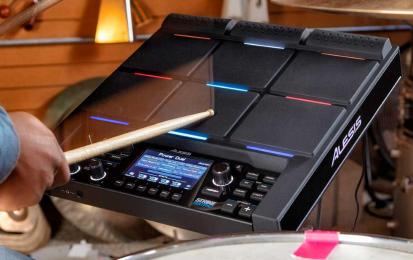
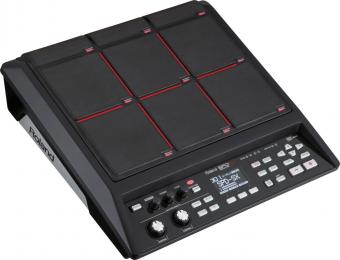
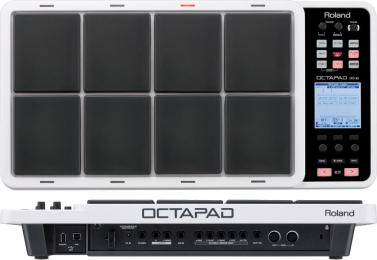
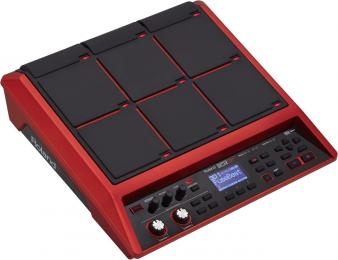
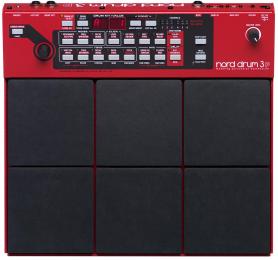
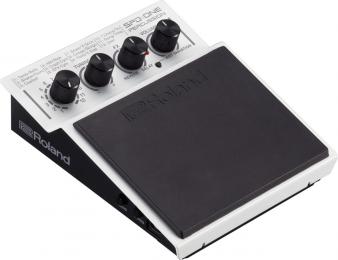
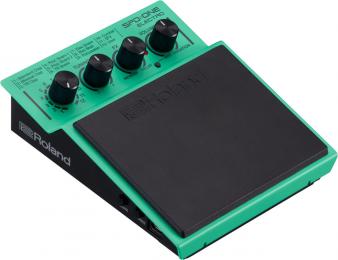
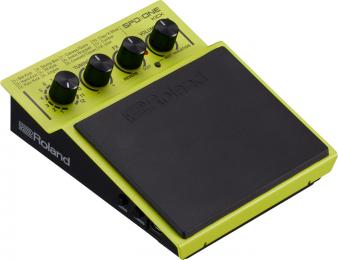
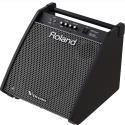
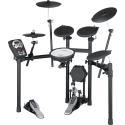
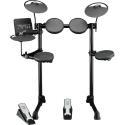
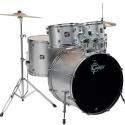
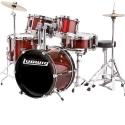
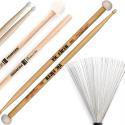
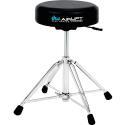
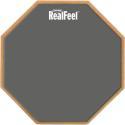
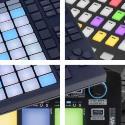
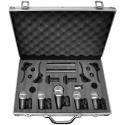
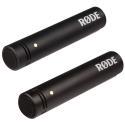
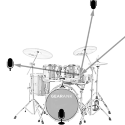
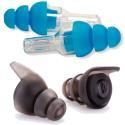
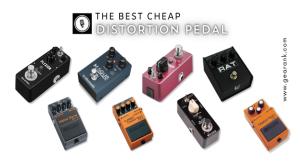
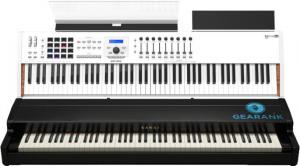
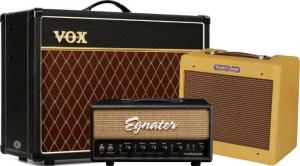
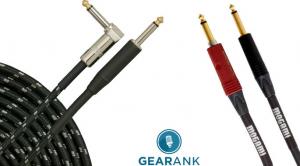
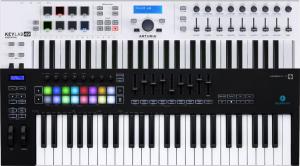
Comments
Publication of our May 2022
Submitted by Jason Horton on
Publication of our May 2022 Edition resulted in the following drum pads being removed the recommended list above:
Hope Yamaha can upgrade the
Submitted by Ben (not verified) on
Hope Yamaha can upgrade the multipad 12
Yes Ben, I hope so too. That
Submitted by Alden Acosta on
Yes Ben, I hope so too. That would shake up the Multipad market for sure! I believe a worthy successor to the SPD-SX is long overdue as well. Thanks for your comment.